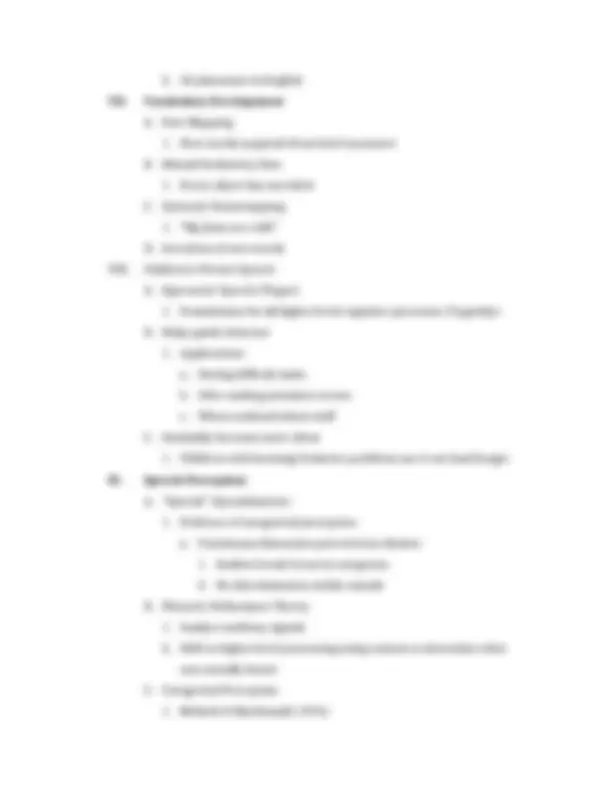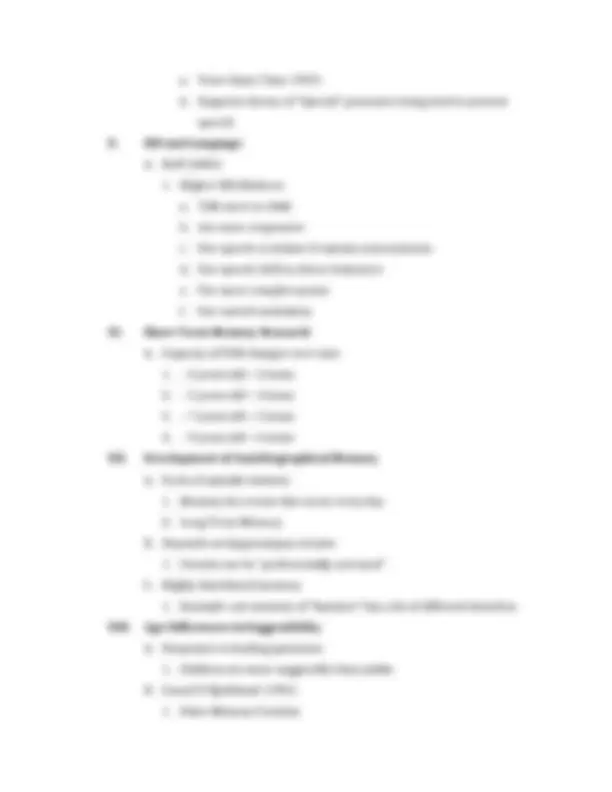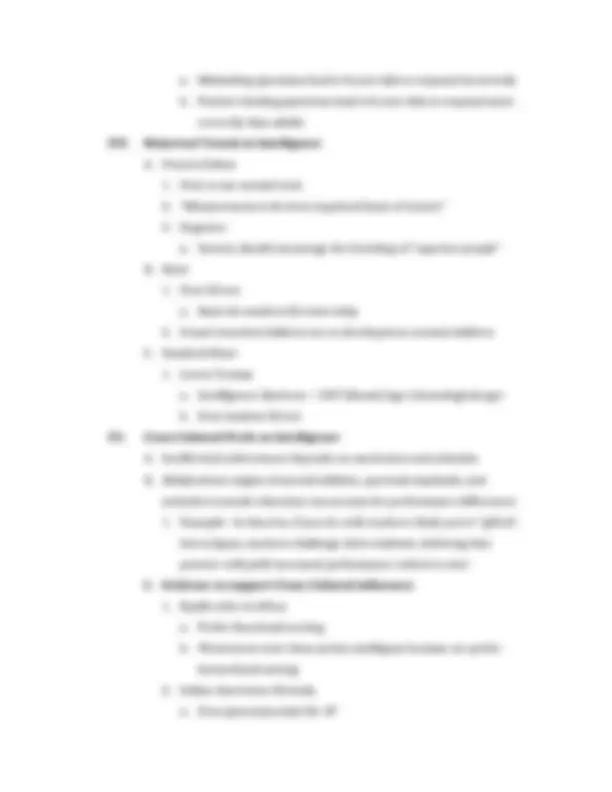





Study with the several resources on Docsity

Earn points by helping other students or get them with a premium plan


Prepare for your exams
Study with the several resources on Docsity

Earn points to download
Earn points by helping other students or get them with a premium plan
Community
Ask the community for help and clear up your study doubts
Discover the best universities in your country according to Docsity users
Free resources
Download our free guides on studying techniques, anxiety management strategies, and thesis advice from Docsity tutors
This study guide outlines the key topics covered in lecture 6, including body growth in middle childhood, the importance of sleep, preventing malnutrition, obesity rates, school recess, language structure, vocabulary development, children's private speech, speech perception, ses and language, short-term memory research, development of autobiographical memory, age differences in suggestibility, historical trends in intelligence, and cross-cultural work on intelligence.
Typology: Study notes
1 / 6

This page cannot be seen from the preview
Don't miss anything!




I. Body Growth In Middle Childhood A. Slow, regular pattern
a. Voice Onset Time (VOT) b. Supports theory of “Special” processes being used to process speech X. SES and Language A. Hoff (2003)
a. Misleading questions lead 6-8 year olds to respond incorrectly b. Positive-leading questions lead 6-8 year olds to respond more correctly than adults XIV. Historical Trends in Intelligence A. Francis Galton